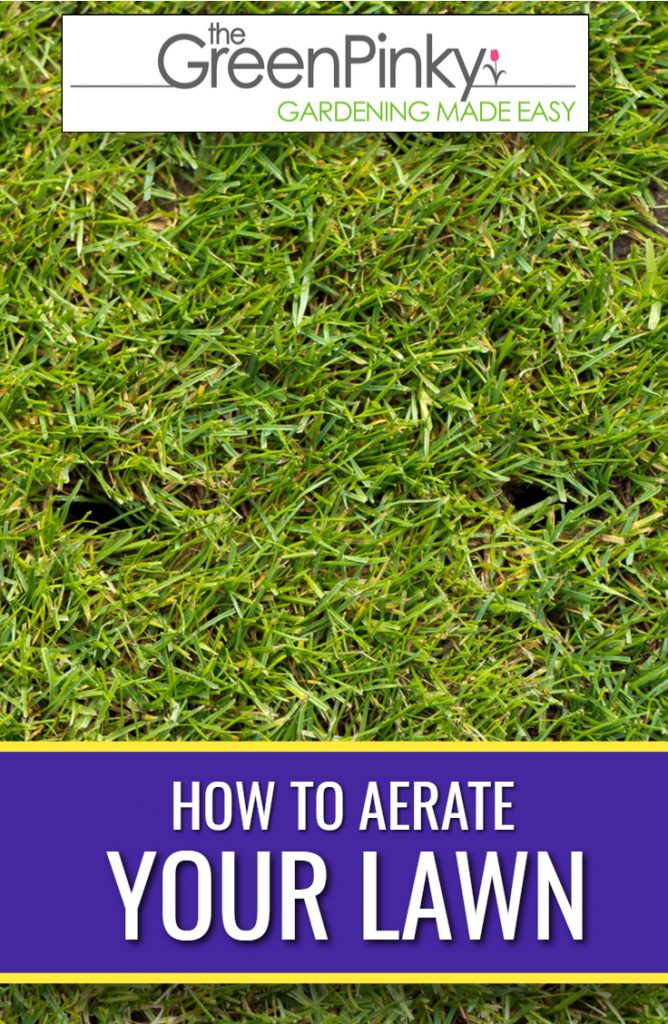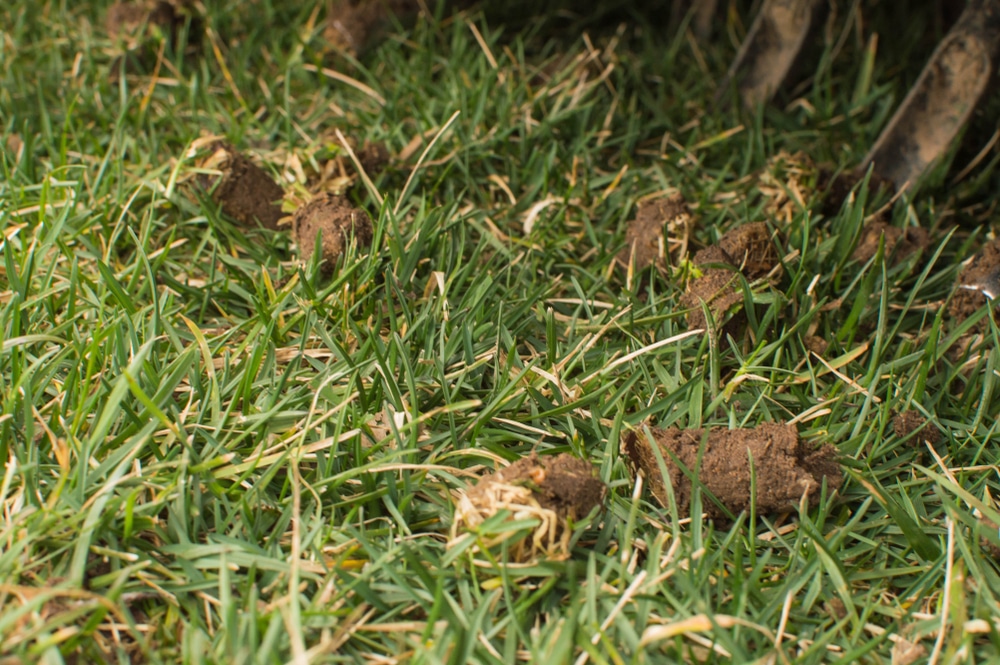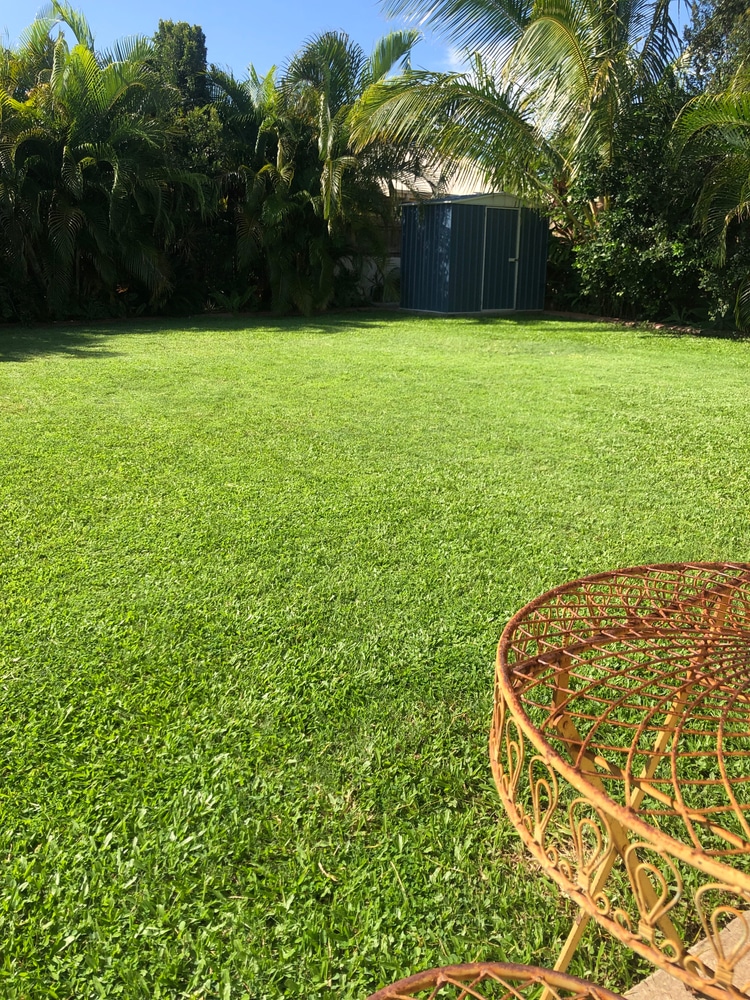Most gardeners spend a lot of time tending to their property. They mow regularly and at the right time of the day; they water the grass in times of drought; and they fertilize to optimize growth.
A lush, green lawn is the best reward for all the time, effort, and money it takes to have a great-looking garden. Most homeowners revel in having visitors enjoy the sight, sound, and smell of a healthy yard.
If you are looking for how to make sure your grass remains lush, make sure to also check out our article on how to take care of St. Augustine grass.
But what if your grass doesn’t look right, despite your best efforts? What if the grass is wilting and there are brown or thin patches developing?
Have you ever considered that your grass might be suffering from a highly compacted ground? The soil is an important part of the ecosystem. It needs ideal conditions to be able to supply all plants with the water, air, and nutrients it needs to flourish. When the ground is compacted, it prevents the formation of air gaps within it. These air gaps are necessary for oxygen and to improve soil drainage. It also encourages healthy microflora and worms.
So, if your grass is suffering, you can bet that your soil is suffering too. The best answer to solve the problem is aerating the ground.
If you are unsure of what this means or how it is done, then read on. Here isis everything you need to know about why, when, and how to aerate your property.

What Are the Benefits
Aeration provides many benefits to a healthy lawn. Here is a list of the most important ones.
It Improves the Overall Health of the Ground
Aeration provides the root system of your grass with easier access to everything it requires for optimal growth. Easier access to these crucial elements means the grass can develop a deeper, more extensive root system.
A healthy root system is the foundation of a healthy and lush yard.

It Relieves Soil Compaction
Compacted soil can be a problem everywhere, but it is especially likely in those areas of your property that sees regular traffic. Everything from pets and kids to yard maintenance equipment will compact the ground over time. This makes it more difficult for grass roots to reach and process the nutrients, water, and air it needs for survival.
Thus, a compacted ground will lead to poor aeration. And without the necessary oxygen, your lawn will develop brown patches, dead spots, and areas with pronounced thinning.
Aeration will loosen the ground and remove so-called soil plugs, which will decrease the density of the dirt and improve plant health.
It Is Beneficial to Overseeding
Aeration will promote direct contact between grass seed and topsoil, which is integral in the process of germination. It creates a moist, nutrient-rich environment that is optimal for the healthy development of new seedlings.

It Reduces Thatch Build-Up
Thatch is a layer of dead grass and other organic matter that sits on top of the grass. If left unchecked, thatch will rob plants of water and the nutrients they need to remain healthy.
Aeration takes soil that is full of microorganisms that aid in decomposition and places it directly on top of the thatch to break it down.
It Assists in pH Regulation
Aeration supports a healthy ph balance. It helps the perfect ph level extend deeper into the ground. The further down your pH is regulated, the deeper your grass roots will grow.
It Prepares Plants for Spring Growing and Winter Dormancy
If you aerate the ground before the first fertilization in the spring, you help important nutrients soak into the ground more efficiently. This makes the fertilizer more effective and helps protect your grass from the stress of summer heat and drought.
In the fall, aerating your property right before spreading autumn’s fertilization will fill the turf with nutrients that are essential for plants to prepare for its dormant winter season.

When Should You Aerate?
As you have just read, aerating your yard is beneficial before spreading spring or fall fertilizer.
But you should also consider aerating your lawn during its peak growing season.
Different types of grass have different peak growing seasons. For cool-season grasses, such as tall fescue or perennial ryegrass, early spring or early fall are good times to loosen the soil. The best time to aerate warm-season grasses like Bahia grass or St. Augustine is in the late spring and through the summer months.
If you plan to overseed your lawn, then you should aerate before or during the planting process. This will ensure that the seedlings come into direct contact with the nutrient-rich topsoil.
Never aerate once the grass goes dormant during the cold-weather months. At this time of the year, you would do more harm than good.

How Often?
How frequently you loosen the ground on your property depends on several different factors. If your lawn sees a lot of traffic—lots of people, pets, or yard equipment—then the ground is probably very compacted. In this case, you need to aerate every year.
If the ground in your area has a high level of clay, then you should also aerate every year. Clay does not allow air, water, and nutrients to spread easily through the soil.
If you don’t have a lot of children or pets frolicking around on your property, and the soil where you live is sandy, then you only need to perform aeration once every two or three years.

What Are the Best Methods and Tools?
There are three main methods used to loosen the ground on your property. Each method has its advantages and drawbacks.
Spike Aerator
Spike aerators work by poking holes in the ground with a spike-like tine. This method is the quickest and simplest, but the results don’t last that long. Because you are merely pushing the ground apart with the spike, there is inward pressure in each hole that will eventually force the soil back into its original spot.
Spike aerators are convenient. They come in the form of “sandals” that strap onto the bottom of your shoes. This method is ideal if you want to aerate your lawn while performing other tasks in your garden. The spikes also come in manual and motorized push styles and as attachments for your lawnmowers or utility vehicle.
They can be purchased relatively cheaply and do not always have to be rented for use.

Slicing Aerator
Slicing aerators have rotating blades that physically slice through the grass and thatch down into the ground. While these types of aerators provide a pathway for air, water, and nutrients to reach the root system without adding to compaction, most lawn care professionals do not use this method because the slicers leave the soil in the ground. These slicers This is not the best option if you are planning to overseed your grass.
Slicing aerators come as an attachment for your lawnmower or utility vehicle and as motorized push-style equipment.
They are usually rented by homeowners and hobby gardeners, as they are expensive. In general, aerating is not done frequently enough to warrant a purchase.

Plug or Core Aerator
These aerators use hollow tines that remove plugs of dirt from the ground and deposit them onto the top of the grass, where they will decompose. They vary in plug depths and widths, depending on the machine you use.
This is the method best suited for overseeding. The plugged-up soil provides the grass seed with direct contact to the nutrient-rich topsoil that is perfect for the germination process.
Plug aerators literally plug dirt from the ground and are thus perfect to reduce compaction. Each plug decreases the density of the ground.
This equipment is usually rented as attachments for your lawnmower or utility vehicle. It also comes in a manual or motorized push version.
It is the method most lawn care professionals prefer.

Steps for Aeration
- Apply 1 inch of water to the lawn one day before you aerate.
- Mark any in-ground irrigation systems and utility lines to avoid damaging them.
- For lightly compacted soil, go over the entire lawn once.
- For a lawn that has never been loosened, go over the entire area vertically and then again horizontally.
- Water the area again to aid in the breakdown and absorption of nutrients.
- If fertilizing or overseeding, do this now.
- Water the area every two to three days for two weeks.
–The Green Pinky

